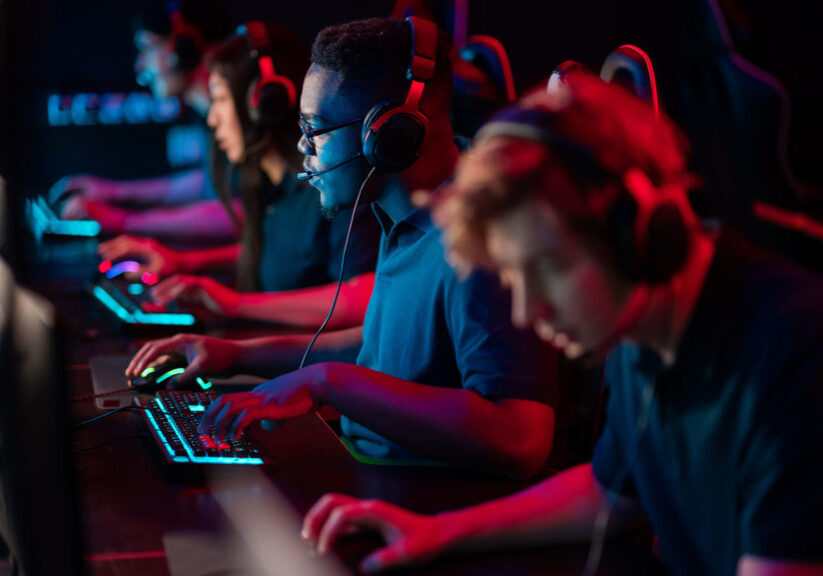A New Era in College Athletics
A new sport has recently emerged on college campuses, and it seems to be here to stay. The rise in popularity of college-level esports has led to many universities giving away significant money to attract top gamers. During the 2018-19 school year, 200 colleges awarded a combined total of more than $16 million in esports scholarships.1
What are esports?
Esports are multiplayer video games played competitively in front of spectators. Esports have become so popular over the last several years that they’re often held in front of audiences at large arenas, similar to other sporting events.
The esports industry has quickly grown in profitability. In 2021, the global esports market was valued at $1.1 billion, and that number is expected to be more than $1.8 billion in 2022.2 The revenue streams for professional esports are similar to those of other professional sports leagues: players are paid for their participation by operators. Operators are paid by distributors (for the right to broadcast the competitions) and audience members (who pay to watch the events). Esports also receive support from advertisers and other partners.
How do college esports scholarships work?
Esports scholarships are typically awarded on a school-by-school basis. Like any other sports scholarship, the amount and terms of esports scholarships vary greatly by institution. The typical scholarship amount ranges between $500 and $8,000 per year. However, several schools have begun offering full-tuition scholarships to esports players. In 2018, Harrisburg University in Pennsylvania became the first college to award full-ride scholarships to each student on its 16-player team.
Similar to athletes in other sports, esports players face fierce competition for scholarship dollars, and the process of getting a scholarship often begins by filling out an application. Schools typically request the following information:
- Game(s) of interest
- Number of hours played each week
- Gamer tag
- Discord tag
- Twitch channel
- net ID
- Primary role
- Secondary role
- Highlight video3
Using the application as a starting point, coaches vet gamers by watching their videos and paying attention to online chatrooms. Then comes the tryout process.
Coaches typically invite promising gamers for a campus visit and in-person tryout. This often includes a team scrimmage during which the coach assesses players’ teamwork, performance and communication skills. Coaches are looking for players who work well with others, stick to their role on the team and show leadership capabilities.
The academic requirements for esports scholarships tend to be more relaxed than those for traditional sports. Most schools require a GPA of 2.5 or higher in order to maintain eligibility. However, having good grades and test scores can help increase the scholarship amount available.
Interested in learning more about the rise of esports opportunities? Creative Planning Sports and Entertainment is here for you. As a specialty practice of Creative Planning, we have experience helping a wide range of traditional and esports athletes navigate the financial challenges they face. Our team members include Certified Financial PlannerTM professionals, certified public accountants, attorneys, insurance specialists and more. For more information on how we can help you plan for your future in esports, please schedule a call.


